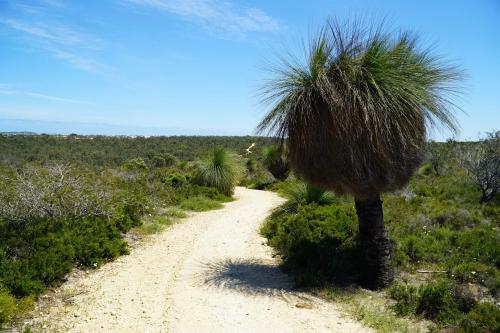About this park
This park is a 12km long narrow strip of bushland north of Perth, near Joondalup. It marks an ancient Aboriginal migration route. This place of cultural heritage is also important to native animals. The strip of land provides a corridor to allow the movement of wildlife along the coastal plain and nearby wetlands.
Come for a bushwalk or a picnic in this tranquil natural setting. The landscape features limestone caprock and a diverse plant life. Jarrah and tuart woodlands stand alongside open banksia, mallee, hakea and dryandra heathlands. Flowering plants in the park include kangaroo paws, native buttercups and native wisteria.
Take a walk in the early morning or late afternoon and keep your eye open for wildlife. You may be lucky and see western grey kangaroos and possibly emus. Endangered Carnaby's black-cockatoos are frequently seen in the park. This area is also home to other native animals including echidnas, brushtail possums and brush wallabies.
Safety information
Plan when to visit. Read this safety information about bushwalking. Consider travelling with a personal location beacon (PLB). In the event you need to be rescued it could save your life!
Gallery


Activities
 Bushwalking
Bushwalking
 Mountain biking
Mountain biking
Plants, wildlife and fungi
Urban development close to areas of bushland almost always heralds the flight of native animals; not so much because of the increased numbers of people, but because of loss of habitat and predation by introduced species such as cats. This has been happening all along the northern corridor as housing developments have spread northwards from Perth. Unfortunately, feral cats, rabbits and foxes are present in large numbers at Neerabup, making life difficult and hazardous for native animals, particularly small mammals such as the quenda (southern brown bandicoot), ash-grey mouse (noodji) and honey possum.
Visit the Atlas of Living Australia for a list of species recorded in Neerabup National Park.
Traditional Owners
We recognise and acknowledge Whadjuk people as the traditional owners of Neerabup National Park.
